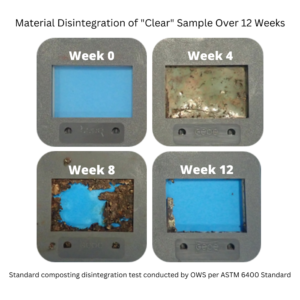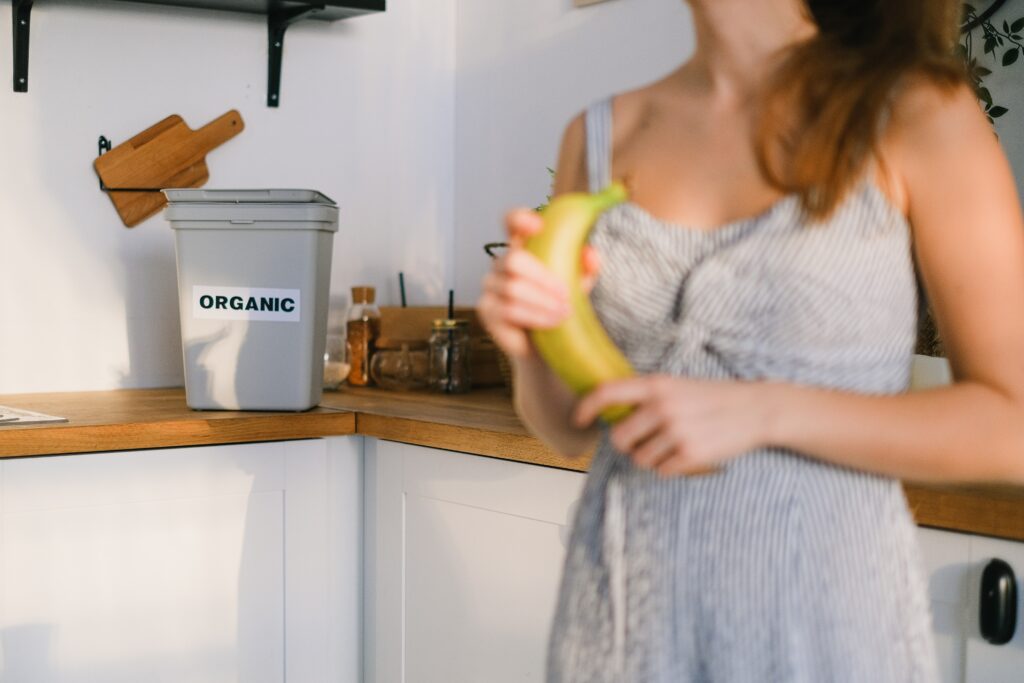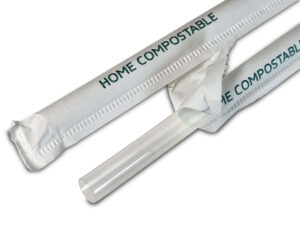Introduction:
The world is facing a major environmental crisis due to the excessive use of plastic products. Traditional plastic straws, in particular, have become a major contributor to the pollution of our oceans and landfills. In response to this issue, many companies have started to produce alternative options such as biodegradable straws and home-compostable straws. However, there is often confusion about the differences between these two types of straws and which option is more sustainable.
The purpose of this article is to provide a comprehensive guide to the differences between biodegradable and home-compostable straws. We will explore the characteristics, benefits, and environmental impacts of each option to help consumers make informed decisions about which type of straw is best for their needs.
It is important to note that while both biodegradable and home-compostable straws are better alternatives to traditional plastic straws, they are not interchangeable terms. Each option has its own unique properties and environmental impacts that must be considered. By understanding the differences between these two types of straws, we can make more informed choices that will help to reduce our impact on the environment.
In the following sections, we will delve into the specific characteristics, benefits, and environmental impacts of biodegradable and home-compostable straws. We will also explore which option is more sustainable and provide recommendations for consumers looking to make the switch to a more eco-friendly straw alternative.
What are Biodegradable Straws?
Biodegradable straws are a popular alternative to traditional plastic straws, as they are designed to break down naturally over time. These straws are made from materials that can be broken down by microorganisms, such as bacteria and fungi, into natural substances like water, carbon dioxide, and biomass. Biodegradable straws are often made from plant-based materials like paper, cornstarch, sugarcane, or bamboo, which are renewable resources that can be grown and harvested sustainably.
One of the key characteristics of biodegradable straws is that they are designed to break down relatively quickly, usually within a few months to a year. This means that they do not persist in the environment for hundreds of years like traditional plastic straws, which can take centuries to decompose. Biodegradable straws are also non-toxic by design and do not release harmful chemicals into the environment as they break down.
There are several benefits to using biodegradable straws. For one, they can help reduce the amount of plastic waste that ends up in landfills and oceans. Plastic straws are one of the most common types of litter found in the environment, and they can harm wildlife that ingests or becomes entangled in them. Biodegradable straws can also be composted along with other organic waste, which can help create nutrient-rich soil for plants.
However, it is important to note that not all biodegradable straws are created equal. Some may only break down under certain conditions, such as high temperatures or specific types of microorganisms. Others may contain additives or coatings that can make them less biodegradable or even harmful to the environment. It is important to choose biodegradable straws that are certified by reputable organizations, such as the Biodegradable Products Institute (BPI) or the European Bioplastics Association (EUBP), to ensure that they meet certain standards for biodegradability and environmental safety.
Overall, biodegradable straws can be a more sustainable alternative to traditional plastic straws, but it is important to choose them carefully and dispose of them properly to ensure that they have the intended environmental benefits.
Characteristics of Biodegradable Straws
One of the key characteristics of biodegradable straws is that they are designed to break down in a variety of environments, including landfills, composting facilities, and even in the ocean. This makes them a more environmentally friendly option than traditional plastic straws, which can take hundreds of years to break down and can cause significant harm to wildlife and ecosystems.
Another important characteristic of biodegradable straws is that they are typically single-use, meaning they are designed to be used once and then disposed of. While this may seem wasteful, it is important to note that biodegradable straws are not designed to be reused or recycled, as this can interfere with their ability to break down naturally.
In terms of their physical characteristics, biodegradable straws can come in a variety of shapes, sizes, and colors, just like traditional plastic straws. They can be straight or bendy, thick or thin, and can even be printed with logos or designs.
Overall, the characteristics of biodegradable straws make them a more sustainable option than traditional plastic straws. However, it is important to note that they are not a perfect solution and still have some environmental impacts, such as the resources required to produce them and the potential for them to end up as litter if not disposed of properly. As such, it is important to consider all factors when choosing between biodegradable and other types of straws.
Benefits of Biodegradable Straws
Biodegradable straws have gained popularity in recent years as a more sustainable alternative to traditional plastic straws. These straws are made from materials that can break down naturally over time, reducing the amount of waste that ends up in landfills and oceans. Here are some of the key benefits of biodegradable straws:
1. Environmentally friendly: Biodegradable straws are made from natural materials such as cornstarch, bamboo, or paper, which are renewable resources. They do not contain harmful chemicals or toxins that can harm the environment or wildlife.
2. Reduced waste: Biodegradable straws can break down naturally over time, reducing the amount of waste that ends up in landfills or oceans. This can help to reduce the negative impact of plastic waste on the environment.
3. Versatile: Biodegradable straws come in a variety of shapes, sizes, and colors, making them suitable for a wide range of applications. They can be used in restaurants, cafes, bars, and other food service establishments, as well as for personal use at home.
4. Cost-effective: While biodegradable straws may be slightly more expensive than traditional plastic straws, they are still relatively affordable and cost-effective in the long run. They can also help to reduce the cost of waste disposal and cleanup.
5. Positive brand image: Using biodegradable straws can help to improve the image of a business or brand, as it demonstrates a commitment to sustainability and environmental responsibility. This can help to attract environmentally conscious customers and build brand loyalty.
Overall, biodegradable straws offer a range of benefits over traditional plastic straws, making them a more sustainable and environmentally friendly option. While they may not be a perfect solution to the problem of plastic waste, they are a step in the right direction toward a more sustainable future.
Environmental Impact of Biodegradable Straws
Biodegradable straws are designed to break down into natural elements over time, but the process of biodegradation can have varying impacts on the environment depending on the specific materials used and the conditions in which they are disposed of.
One of the main benefits of biodegradable straws is that they do not contribute to the buildup of plastic waste in landfills or oceans. However, if biodegradable straws are not disposed of properly, they can still have negative environmental impacts. For example, if they end up in the ocean, they can break down into microplastics that can harm marine life and enter the food chain.
Another potential issue with biodegradable straws is that they may require specific conditions in order to break down properly. Some biodegradable straws are only able to break down in industrial composting facilities, which may not be available in all areas. If these straws are disposed of in a regular landfill, they may not break down as intended and could still contribute to environmental harm.
Overall, the environmental impact of biodegradable straws depends on a variety of factors, including the specific materials used, the disposal method, and the conditions in which they are disposed of. While they can be a more sustainable option than traditional plastic straws, it is important to consider the full lifecycle of these products and ensure that they are disposed of properly in order to minimize their environmental impact.
What are Home Compostable Straws?
Home compostable straws are a type of straw that can be broken down into organic matter in a home composting environment. Unlike biodegradable straws, which may require specific conditions to break down, home-compostable straws can be composted in a backyard compost bin or municipal composting facility. These straws are made from plant-based materials such as wood pulp (cellulose). cornstarch, sugarcane, or bamboo, which are renewable resources.
Home compostable straws are designed to break down quickly and completely, leaving behind no harmful residues or microplastics. They are also non-toxic and safe for use in food and beverage applications. Home compostable straws are a sustainable alternative to traditional plastic straws, which can take hundreds of years to decompose and contribute to plastic pollution in the environment.
One of the key characteristics of home compostable straws is their ability to break down into nutrient-rich compost, which can be used to fertilize plants and gardens. This process helps to close the loop on waste and reduce the need for synthetic fertilizers, which can have negative environmental impacts.
In terms of benefits, home compostable straws offer a sustainable solution for businesses and individuals looking to reduce their environmental footprint. They are a viable alternative to plastic straws and can help to reduce the amount of plastic waste that ends up in landfills and oceans. Home compostable straws are also a great option for those who are committed to composting and want to reduce their waste stream.
When it comes to environmental impact, home compostable straws are a much better option than traditional plastic straws. They are made from renewable resources and can be composted in a home or municipal composting facility. This means that they do not contribute to plastic pollution in the environment and can help to reduce greenhouse gas emissions associated with waste disposal.
In conclusion, home compostable straws are a sustainable alternative to traditional plastic straws. They are made from renewable resources, can be composted in a home or municipal composting facility, and offer a range of benefits for businesses and individuals looking to reduce their environmental footprint. While biodegradable straws may also be a viable option, home compostable straws offer a more sustainable solution for those committed to composting and reducing waste.
Characteristics of Home Compostable Straws
Home compostable straws are a type of straw that can be broken down into organic matter in a home composting environment. Unlike biodegradable straws, which may require specific conditions to break down, home-compostable straws can be composted in a regular backyard compost bin.
One of the key characteristics of home compostable straws is that they are made from natural materials such as plant-based polymers or paper. These materials are biodegradable and can be broken down by microorganisms in a composting environment. Home compostable straws are also free from harmful chemicals and toxins like PFAs, making them a safer and more sustainable alternative to traditional plastic straws.
In a home composting environment, these straws can break down within a few months, leaving behind nutrient-rich compost that can be used to fertilize plants and gardens. This means that home compostable straws have a much lower environmental impact than traditional plastic straws, which can take hundreds of years to break down and can release harmful chemicals into the environment.
Home compostable straws also offer a number of benefits over biodegradable straws. Because they can be composted in a regular backyard compost bin, they are more convenient and accessible for consumers. They also have a lower carbon footprint than biodegradable straws, as they do not require specialized facilities or processes to break down.
Overall, home compostable straws are a sustainable and eco-friendly alternative to traditional plastic straws. They offer a number of benefits over biodegradable straws, including convenience, accessibility, and a lower environmental impact. By choosing home compostable straws, consumers can help reduce the amount of plastic waste in the environment and support a more sustainable future.

Benefits of Home Compostable Straws
Home compostable straws are a type of straw that can be broken down into organic matter in a home composting environment. These straws are made from natural materials such as plant-based polymers, paper, or bamboo, and are designed to decompose quickly and safely without leaving any harmful residues.
One of the main benefits of home compostable straws is that they are a more sustainable alternative to traditional plastic straws. Plastic straws can take hundreds of years to decompose, and they often end up in landfills or oceans, where they can harm wildlife and pollute the environment. Home compostable straws, on the other hand, can be composted in a matter of weeks or months, and they do not release any toxic chemicals or microplastics into the soil.
Another benefit of home compostable straws is that they can help to reduce waste and promote circularity. When these straws are composted, they break down into nutrient-rich soil that can be used to grow new plants and crops. This creates a closed-loop system where waste is transformed into a valuable resource, rather than being discarded and forgotten.
Home compostable straws are also a versatile and convenient option for consumers. They can be used in a variety of settings, from home kitchens to restaurants and cafes, and they come in a range of sizes and styles to suit different needs. Some home compostable straws are even designed to be reusable, which can further reduce waste and save money in the long run.
Overall, the benefits of home compostable straws are clear. They are a sustainable, circular, and convenient alternative to traditional plastic straws, and they can help to reduce waste and protect the environment. By choosing home compostable straws, consumers can make a positive impact on the planet and support a more sustainable future.
Environmental Impact of Home Compostable Straws
Home compostable straws are a type of straw that can be broken down into organic matter in a home composting system. This means that they can be disposed of in a way that is both convenient and environmentally friendly.
One of the main benefits of home compostable straws is that they do not contribute to the buildup of waste in landfills. When traditional plastic straws are disposed of, they can take hundreds of years to break down, and they release harmful chemicals into the environment as they do so. Home compostable straws, on the other hand, can be broken down in a matter of months, and they do not release any harmful chemicals into the environment.
Another benefit of home compostable straws is that they can be made from renewable resources. Many home compostable straws are made from materials like cornstarch or sugarcane, which are renewable resources that can be grown and harvested sustainably. This means that home compostable straws have a much lower carbon footprint than traditional plastic straws, which are made from non-renewable fossil fuels.
In addition to their environmental benefits, home compostable straws are also convenient for consumers. Because they can be disposed of in a home composting system, they do not require any special disposal methods or facilities. This makes them a great option for people who are looking for a more sustainable alternative to traditional plastic straws, but who do not want to go out of their way to dispose of them.
Overall, home compostable straws are a great option for people who are looking for a more sustainable alternative to traditional plastic straws. They are environmentally friendly, made from renewable resources, and convenient for consumers. By choosing home compostable straws over traditional plastic straws, consumers can help to reduce the amount of waste that ends up in landfills, and they can help to protect the environment for future generations.
Conclusion: Are All Biodegradable Straws The Same?
In conclusion, the question of which option is more sustainable between biodegradable and home compostable straws is a complex one. Both types of straws have their unique characteristics, benefits, and environmental impacts. However, it is clear that home compostable straws are the more sustainable option.
Home compostable straws are designed to break down completely in a home composting environment, leaving no harmful residues behind. They are made from natural materials such as plant-based polymers, which are renewable and biodegradable. This means that they can be returned to the earth as organic matter, contributing to the growth of new plants and reducing waste.
On the other hand, biodegradable straws may take longer to break down and may require specific conditions to do so. They may also leave behind microplastics or other harmful residues that can harm the environment. Additionally, the term “biodegradable” is not regulated, meaning that some products marketed as biodegradable may not actually break down as advertised.
In terms of benefits, home compostable straws are a more sustainable option because they can be composted at home, reducing the need for waste disposal and contributing to soil health. They are also made from renewable materials, reducing the reliance on fossil fuels and non-renewable resources.
In contrast, biodegradable straws may offer some benefits in terms of reducing plastic waste, but they may not be as sustainable in the long run. They may also require specific disposal methods, such as industrial composting, which may not be available in all areas.
Overall, the choice between biodegradable and home-compostable straws depends on individual needs and circumstances. However, for those looking for a more sustainable option, home compostable straws are the clear winner. They offer a more natural and renewable alternative to traditional plastic straws, contributing to a healthier planet for future generations.




